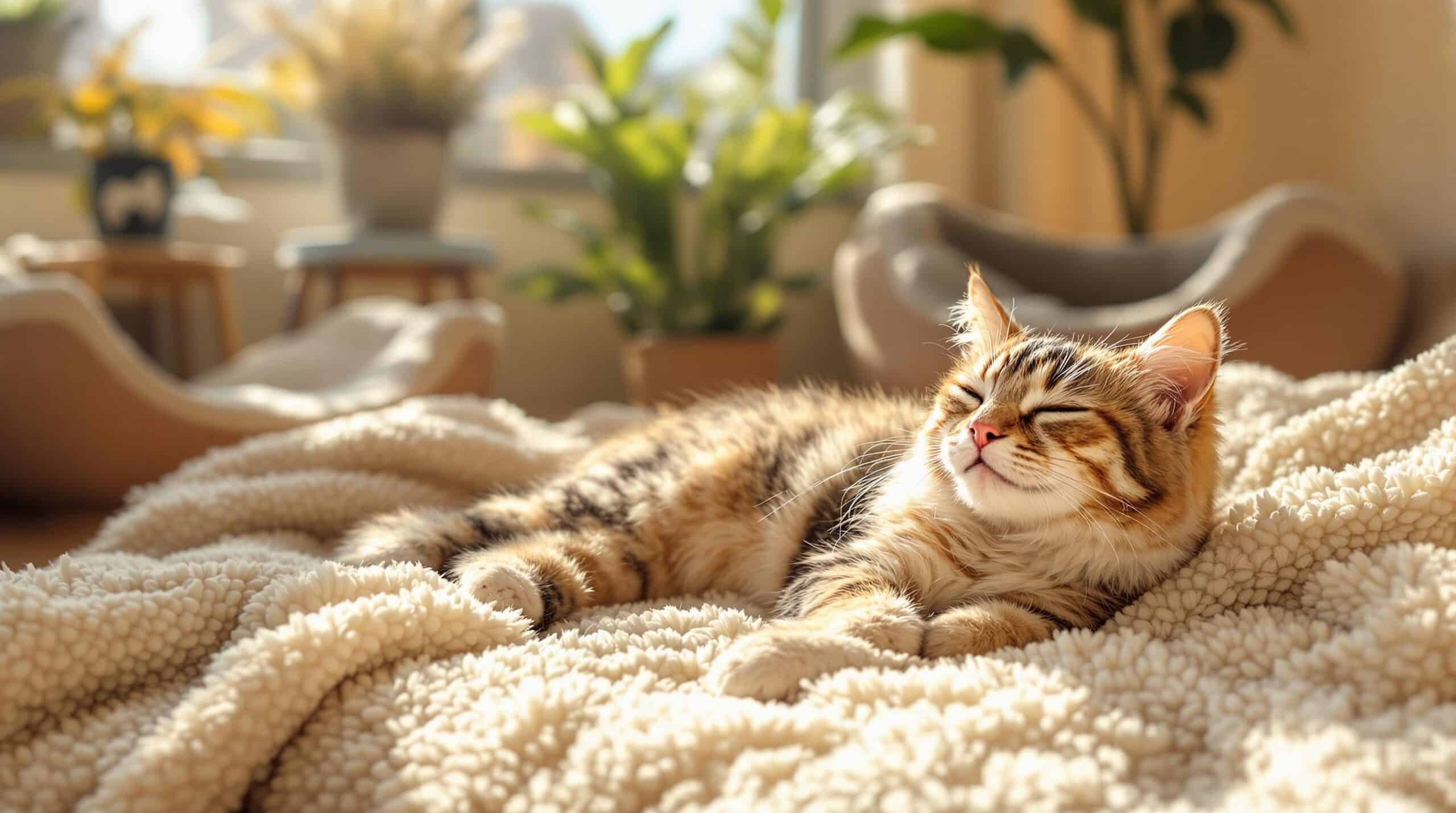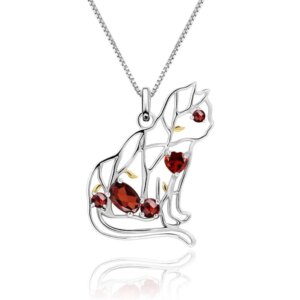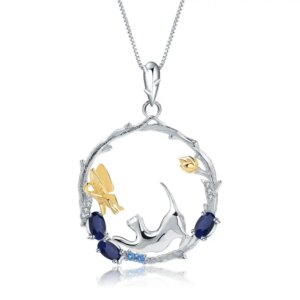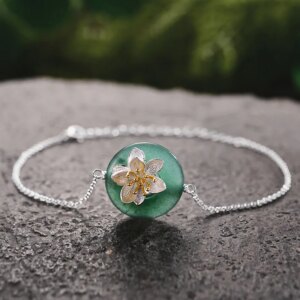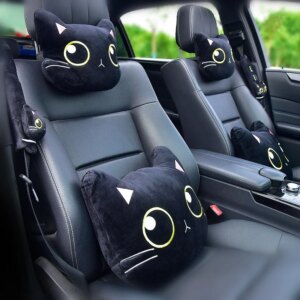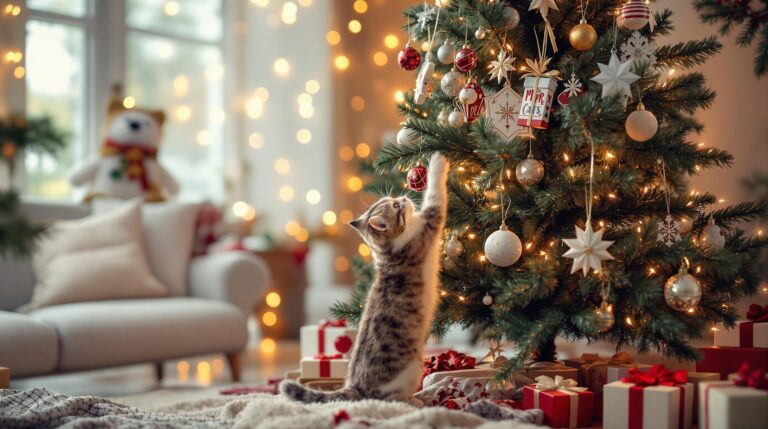Cats loafing is a behavior that has captivated cat lovers for generations. In this article, we will explore why cats adopt this position, the benefits it offers, and how it can be a sign of their well-being. We will also provide tips on how to create a comfortable environment for your cat to loaf and relax. By the end, you’ll have a deeper understanding of this charming behavior and how it reflects your cat’s contentment. At Cat Karma Creations, we are passionate about all things feline and love to share our knowledge with fellow cat enthusiasts. For unique and stylish cat-themed gifts, visit our website and explore our range of jewelry and accessories.
Why Do Cats Loaf
Behavioral Aspects
The loaf position, where a cat sits with its paws tucked under its body and its back straight, is a common and endearing sight. This position is not just a random choice; it is deeply rooted in a cat’s natural behavior. Cats in loaf position are often exhibiting signs of contentment and security. This posture allows them to be alert and ready to move if necessary, while still enjoying a relaxed state.
Cats in loaf position are generally feeling safe and comfortable in their environment. This can be a sign that they trust their surroundings and are at ease. If you notice your cat frequently adopting this position, it’s a good indication that they are happy and content in their home. At Cat Karma Creations, we create jewelry and gifts that reflect the love and happiness we share with our feline friends. For more information, feel free to contact us.
Comfort and Relaxation
The loaf position is not just about security; it is also about comfort and relaxation. Cats are known for their ability to find the most comfortable spots to rest, and the loaf position is no exception. This posture allows them to maintain a balanced and supported position, which can help prevent discomfort and muscle strain.
Moreover, the loaf position is often associated with a sense of coziness and warmth. Cats may choose this position when they are in a warm and inviting environment, such as on a soft bed or a sunny windowsill. This behavior is a testament to their ability to find and enjoy the most comfortable spaces. For those who love to spoil their cats, our cat-themed jewelry makes the perfect gift for any cat lover.
Health Benefits
Beyond comfort and relaxation, the loaf position can also have health benefits for cats. When a cat is in this position, their muscles are relaxed, and their posture is good. This can help reduce the risk of musculoskeletal issues and promote overall well-being.
Additionally, the loaf position can be a sign of good health. Cats that are feeling unwell or uncomfortable are less likely to adopt this posture. If you notice your cat frequently loafing, it’s a good indication that they are in good health. However, if you observe any changes in their loafing behavior, it’s always a good idea to consult with a veterinarian. At Cat Karma Creations, we are committed to supporting cat welfare and often collaborate with rescue charities. For more information, visit our website.
Different Loafing Positions
Loaf vs Sphinx
While the loaf position is a common and recognizable posture, it is not the only one that cats adopt. The sphinx position, where a cat sits with their front legs stretched forward and their hind legs tucked under their body, is another popular resting position. Both positions offer different levels of comfort and relaxation, and they can provide insights into a cat’s mood and behavior.
| Feature | Loaf Position | Sphinx Position |
|---|---|---|
| Comfort Level | High | Moderate |
| Relaxation | High | Moderate |
| Health Indicators | Good posture, relaxed muscles | Alert, ready to move |
| Behavioral Significance | Content, comfortable | Observant, cautious |
The loaf position is generally associated with higher levels of comfort and relaxation. Cats in this position are often content and at ease. In contrast, the sphinx position is more alert and cautious. Cats in this position are often observant and ready to move if needed. Both positions can be indicators of a cat’s well-being, but they reflect different levels of relaxation and alertness.
Loaf vs Curled-Up
Another common resting position is the curled-up position, where a cat tucks their body into a tight ball. This position is often associated with a sense of security and coziness. While both the loaf and curled-up positions offer comfort and relaxation, they serve different purposes.
| Feature | Loaf Position | Curled-Up Position |
|---|---|---|
| Comfort Level | High | High |
| Relaxation | High | High |
| Health Indicators | Good posture, relaxed muscles | Cozy, secure |
| Behavioral Significance | Content, comfortable | Secure, cozy |
The loaf position is more open and relaxed, while the curled-up position is more compact and secure. Cats may choose the curled-up position when they are seeking a sense of security, such as in a new or unfamiliar environment. In contrast, the loaf position is often adopted when a cat is feeling safe and comfortable in their surroundings.
Loaf vs Stretched-Out
The stretched-out position, where a cat lies on their side with their legs extended, is another common resting posture. This position is often associated with active and energetic cats. While the loaf position is more relaxed and content, the stretched-out position is more dynamic.
| Feature | Loaf Position | Stretched-Out Position |
|---|---|---|
| Comfort Level | High | Low |
| Relaxation | High | Low |
| Health Indicators | Good posture, relaxed muscles | Stretching, active |
| Behavioral Significance | Content, comfortable | Active, energetic |
The loaf position is generally more comfortable and relaxing, while the stretched-out position is more active and dynamic. Cats in the stretched-out position are often preparing to move or play, while those in the loaf position are more likely to be in a state of rest and relaxation.
Creating a Comfortable Environment for Loafing
Choosing the Right Bedding
To encourage your cat to loaf and relax, it’s important to provide them with the right bedding. Soft and comfortable materials, such as plush blankets or memory foam beds, can make a big difference. These materials provide support and comfort, making it more likely for your cat to adopt the loaf position.
Consider the temperature and texture of the bedding as well. Cats often prefer warm and cozy environments, so a heated bed or a sunny spot can be very appealing. Additionally, the texture of the bedding can play a role in your cat’s comfort. Some cats prefer soft and smooth surfaces, while others may enjoy more textured materials. For a cozy and stylish bed, check out our nature-inspired designs.
Providing Warmth and Coziness
Creating a warm and cozy environment is essential for encouraging your cat to loaf. Cats are naturally drawn to warm and comfortable spaces, so providing a source of warmth, such as a heated bed or a sunny window, can be very beneficial. Additionally, using soft and plush materials can add to the coziness of the environment.
Consider adding a few soft blankets or cushions to your cat’s favorite resting spots. These can provide additional warmth and comfort, making it more likely for your cat to loaf and relax. You can also use a heating pad or a warm water bottle to create a warm and inviting space for your cat. For more tips on creating a cozy environment, follow us on Instagram.
Ensuring a Safe Space
Creating a safe and secure environment is crucial for encouraging your cat to loaf. Cats are more likely to adopt the loaf position when they feel safe and comfortable in their surroundings. This means providing a space where they can rest without feeling threatened or anxious.
Consider the location of your cat’s resting spots. A quiet and low-traffic area can be ideal, as it provides a sense of privacy and security. Additionally, using a covered bed or a cozy cave can make your cat feel more secure and protected. These small changes can make a big difference in your cat’s comfort and relaxation. For more information on creating a safe space, visit our website or Facebook page.
Understanding the Loaf Position in Cat Communication
Signs of Contentment
The loaf position is often a sign of a cat’s contentment and relaxation. When a cat is in this position, they are generally feeling safe, comfortable, and happy. This behavior can be a valuable indicator of your cat’s well-being and can help you understand their emotional state.
Cats in loaf position are often more approachable and affectionate. They may be more likely to seek out attention or interaction with their owners. By recognizing this behavior, you can better understand your cat’s needs and provide the appropriate care and attention. For unique and stylish cat-themed gifts, visit our website and explore our range of jewelry and accessories.
Behavioral Cues
Beyond contentment, the loaf position can also provide insights into a cat’s behavioral cues. Cats in this position are often relaxed and at ease, but they can also be alert and observant. This dual nature of the loaf position can help you better understand your cat’s mood and behavior.
For example, if your cat is in the loaf position but their ears are perked and their eyes are wide, they may be more alert and observant. On the other hand, if your cat is in the loaf position with their eyes half-closed and their body relaxed, they are likely feeling very content and comfortable. By paying attention to these subtle cues, you can better interpret your cat’s behavior and respond appropriately. For more tips on understanding your cat’s behavior, follow us on Pinterest.
Social Behavior
The loaf position can also play a role in a cat’s social behavior. Cats in this position are often more open and approachable, making it easier for them to interact with other cats or humans. This behavior can be a sign of trust and social bonding.
In multi-cat households, the loaf position can be a way for cats to communicate their willingness to interact and socialize. Cats that are in this position are often more willing to engage in play or other social activities. By recognizing this behavior, you can create a more harmonious and social environment for your cats. For more information on creating a social environment for your cats, visit our website or Twitter page.
Popular Quote
“A cat has absolute emotional honesty; human beings, for one reason or another, may hide their feelings, but a cat does not.” — Ernest Hemingway
Statistical Fact
According to a study by the American Pet Products Association, approximately 42.7 million households in the United States own a cat. This statistic highlights the widespread love and companionship that cats provide to their owners. While this number is an estimate and subject to change, it underscores the significant role that cats play in many people’s lives.
Three Tips for Encouraging Cats to Loaf
- Provide a Comfortable Bed: Invest in a high-quality, soft, and cozy bed that your cat will love. This can be a plush blanket, a memory foam bed, or a heated bed to keep them warm and relaxed.
- Create a Warm Environment: Cats are drawn to warm and cozy spots. Place their bed near a sunny window or use a heating pad to create a warm and inviting space for them to loaf.
- Ensure a Safe Space: Cats feel more comfortable and secure in quiet and low-traffic areas. Provide a covered bed or a cozy cave to give your cat a sense of privacy and security.
Popular Questions About Cats Loafing
- Why do cats loaf? Cats loaf to feel safe, comfortable, and relaxed. This position allows them to maintain a balanced and supported posture while still being alert if needed.
- Is the loaf position a sign of good health? Yes, the loaf position can be a sign of good health. Cats that are feeling unwell or uncomfortable are less likely to adopt this posture. If you notice any changes in your cat’s loafing behavior, consult a veterinarian.
- How can I encourage my cat to loaf? Provide a comfortable and warm environment, a safe and secure space, and high-quality bedding. These factors can encourage your cat to adopt the loaf position and feel more relaxed.
Final Thoughts About Cats Loafing
The loaf position is a beautiful and endearing behavior that reflects a cat’s contentment and relaxation. By understanding why cats loaf and how to create a comfortable environment for them, you can enhance your bond with your feline friend. If you notice any changes in your cat’s loafing behavior, it’s always a good idea to consult with a veterinarian. For more unique and stylish cat-themed gifts, visit our website and explore our range of cat jewelry and accessories. If you have any questions or would like to place a custom order, feel free to contact us or call us at (800) 343-1604. We are always here to help and support you and your feline friends.

